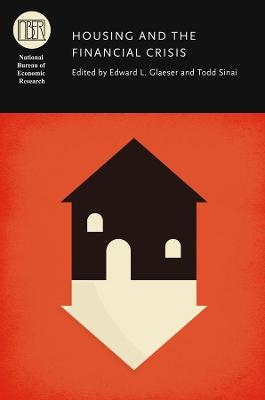
Housing and the Financial Crisis
Seiten
2013
University of Chicago Press (Verlag)
978-0-226-03058-6 (ISBN)
University of Chicago Press (Verlag)
978-0-226-03058-6 (ISBN)
Conventional wisdom held that housing prices couldn't fall. This book looks at what happened to prices and construction both during and after the housing boom in different parts of the American housing market, accounting for why certain areas experienced less volatility than others. It then examines the causes of the boom and bust.
Conventional wisdom held that housing prices couldn't fall. But the spectacular boom and bust of the housing market during the first decade of the twenty-first century and millions of foreclosed homeowners have made it clear that housing is no different from any other asset in its ability to climb and crash. Housing and the Financial Crisis looks at what happened to prices and construction both during and after the housing boom in different parts of the American housing market, accounting for why certain areas experienced less volatility than others. It then examines the causes of the boom and bust, including the availability of credit, the perceived risk reduction due to the securitization of mortgages, and the increase in lending from foreign sources. Finally, it examines a range of policies that might address some of the sources of recent instability.
Conventional wisdom held that housing prices couldn't fall. But the spectacular boom and bust of the housing market during the first decade of the twenty-first century and millions of foreclosed homeowners have made it clear that housing is no different from any other asset in its ability to climb and crash. Housing and the Financial Crisis looks at what happened to prices and construction both during and after the housing boom in different parts of the American housing market, accounting for why certain areas experienced less volatility than others. It then examines the causes of the boom and bust, including the availability of credit, the perceived risk reduction due to the securitization of mortgages, and the increase in lending from foreign sources. Finally, it examines a range of policies that might address some of the sources of recent instability.
Edward L. Glaeser is the Fred and Eleanor Glimp Professor of Economics at Harvard University and a research associate and director of the Working Group on Urban Economics at the NBER. Todd Sinai is associate professor of real estate and business economics and public policy at the Wharton School at the University of Pennsylvania and a research associate of the NBER.
| Erscheint lt. Verlag | 13.9.2013 |
|---|---|
| Reihe/Serie | (NBER) National Bureau of Economic Research Conference Reports |
| Sprache | englisch |
| Maße | 16 x 24 mm |
| Gewicht | 737 g |
| Themenwelt | Wirtschaft ► Betriebswirtschaft / Management ► Finanzierung |
| Wirtschaft ► Betriebswirtschaft / Management ► Rechnungswesen / Bilanzen | |
| Betriebswirtschaft / Management ► Spezielle Betriebswirtschaftslehre ► Immobilienwirtschaft | |
| Wirtschaft ► Volkswirtschaftslehre ► Finanzwissenschaft | |
| ISBN-10 | 0-226-03058-X / 022603058X |
| ISBN-13 | 978-0-226-03058-6 / 9780226030586 |
| Zustand | Neuware |
| Haben Sie eine Frage zum Produkt? |
Mehr entdecken
aus dem Bereich
aus dem Bereich
Erfolgsstrategien für den modernen Immobilienmarkt
Buch | Softcover (2024)
ForwardVerlag
CHF 25,20
Handbuch für Studium und Praxis
Buch | Hardcover (2023)
Vahlen (Verlag)
CHF 109,95
warum Rene Benkos Immobilienimperium zusammenbrach und was dem …
Buch | Hardcover (2024)
FinanzBuch Verlag
CHF 30,80


